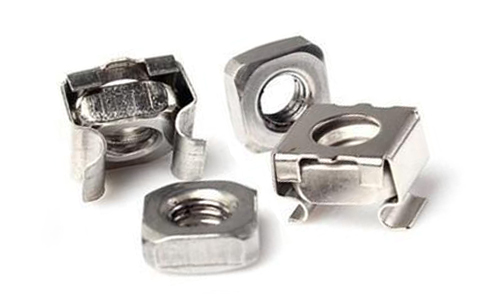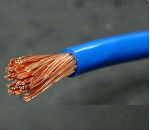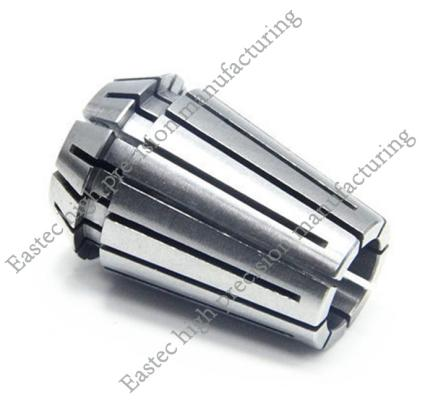
Characteristics of Clamp Nut:
1. Self-locking: The clamp nut achieves its self-locking feature through an internal spring and grooves or serrations. When tightening the threaded connection, the spring compresses and fills the grooves or serrations, firmly gripping the internal threads around the bolt or threaded rod. This self-locking property allows the clamp nut to maintain a secure fastening state even under the influence of vibrations or external forces, reducing the risk of loosening. This self-locking characteristic gives the clamp nut an advantage in preventing loosening.
2. Vibration Resistance: The clamp nut effectively withstands external vibrations, ensuring that the threaded connection remains stable in vibrating environments. As a result, it finds wide application in scenarios where reliable connections are required under vibrations or dynamic loads, such as in the automotive, aviation, and industrial equipment sectors. The use of clamp nuts enhances the stability of connections in these applications.
3. Versatility: Clamp nuts are suitable for various types of threaded connections, including bolts, threaded rods, and more. Different specifications and sizes of clamp nuts cater to diverse connection requirements, making them suitable for use in a wide range of mechanical devices and equipment.
4. Convenient Maintenance: Clamp nuts are generally reusable and do not require lubricants during use. This convenience in maintenance not only saves time but also reduces environmental pollution risks associated with disposable fasteners.
5. Corrosion Resistance: Clamp nuts are typically made from corrosion-resistant materials, offering excellent resistance to chemical corrosion. This property makes them particularly well-suited for applications in corrosive environments or chemical industries.
Practical Applications of Clamp Nut:
1. Automotive Industry: In the automotive manufacturing sector, clamp nuts are widely used for securing components such as tires, engines, and chassis. They effectively prevent bolt loosening caused by vibrations during vehicle operation, thereby enhancing the stability and safety of the vehicles.
2. Machinery Equipment: Clamp nuts also demonstrate significant advantages in various types of machinery equipment, including industrial machines, agricultural machinery, and construction equipment. They maintain secure fastening connections, resist external forces and vibrations, ensuring the normal operation of the equipment.
3. Aerospace Industry: In the aerospace field, the self-locking feature of clamp nuts is particularly crucial. They are extensively utilized in aircraft, satellites, rockets, and other aerospace equipment, ensuring reliable operation even under extreme conditions.
Clamp Nut Usage Guidelines:
1. Appropriate Tightening Force: Although clamp nuts possess self-locking properties, it is essential to apply the appropriate tightening force. Over-tightening may lead to nut damage or thread deformation, affecting the self-locking effectiveness. When tightening the nut, it is crucial to follow the regulations and recommendations provided by the equipment manufacturer.
2. Avoid Mixing Different Components: Clamp nuts are typically designed to be used with specific types of bolts or threaded rods. Mixing different specifications of bolts or threaded rods may result in the nut not gripping correctly or producing unpredictable outcomes. When selecting and using clamp nuts, it is crucial to ensure compatibility with the matching bolts or threaded rods.
3. Not Reusable: Clamp nuts are generally not intended for multiple reuses. Repeated tightening and loosening may cause the internal spring to lose its original elasticity, affecting the self-locking function. It is recommended to replace the clamp nut whenever replacing or adjusting bolts.
4. Avoid Excessive Loading: Despite having good vibration resistance, clamp nuts should not be used beyond their load-bearing capacity. In high-load and high-speed equipment, it is necessary to choose suitable combinations of bolts and nuts to ensure optimal performance and safety.





 Customer service 1
Customer service 1  Customer service 2
Customer service 2